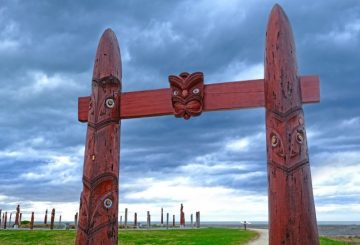中小企業は限界に達しており、政府にさらなる支援を求めています。
Business New Zealand(NZ最大のビジネス支援団体、BusinessNZとも)と国民党は、中小企業の経営者とその従業員がメンタルヘルスのサポートを受けられるようにするための基金を早急に設立することを、政府に求めています。
一方、ホスピタリティ・ニュージーランド(NZのホスピタリティ業界代表団体)は、オークランドが警戒レベル2に移行しても賃金補助を受けられるようにしてほしいと考えています。
オークランドで「ロングルーム」を経営するリチャード・バグナル氏は、週に約12,000ドルの損失を出しており、事業へのストレスと不安を抱えています。
「眠れない夜が続き、真夜中に目が覚めては、いろいろなことを考え始めてしまう。この状況から抜け出せるのか?どのようなものなのか?従業員とビジネスを守るために何ができるのか?」
彼の会社では、定期的にスタッフの確認をしていますが、レベル2であっても、新たな規制のため、すべてのスタッフに仕事を提供できるかどうかはわからないそうです。
Vineyard Cottages(結婚式やイベント向けの多目的宿泊施設)のエル・アーモン・ジョーンズ氏も、結婚式やクリスマスパーティーの予定を変更しようとするお客様が多く、確実な情報を得るのが難しいと感じていました。
「デルタ型のレベル2の制限により、誰もがこの状況が長く続くことを想定して予約を維持することに神経を尖らせており、良い状況とは言えません」と彼女は語ってます。
ホスピタリティ・ニュージーランドのオークランド支部長であるジェイミー・フリーマン氏によると、悩める経営者からのメールが殺到しているとのことでした。
「正直なところ、限界に来ています…(中略)…私が目にしたメッセージは、助けを求める声や、先の見えないといったものばかりでした。」
「彼らは計画を立てることができず、泣き言や不平不満ではなく、ただ持ち堪えることしかできないのです」と彼は言います。
フリーマン氏によると、警戒レベル2でも、デルタ型に適応した新たな制限があるため、一部のビジネスにとっては、営業を開始することは経済的に不可能だったといいます。
また、深刻な経済的ストレスに直面している人々の精神的健康についても懸念されています。
国民党のメンタルヘルス広報担当であるマット・ドゥーシー氏は、中小企業向けに1,000万ドルのメンタルヘルス支援策を設けるよう政府に要請しました。
この基金は、BusinessNZ、各地域の商工会議所、経済開発機関と連携して設立される予定です。
MYOB社の報告によると、最近のロックダウンの前にも、ニュージーランドの中小企業(SME)の経営者の3分の1以上が、ビジネスを始めてからメンタルヘルスの不調を経験したことがあるという結果が出ています。
カーク・ホープ氏は、提案されている基金が中小企業への迅速な支援に役立つことを望んでいます。
「一般的に中小企業は、特に警戒レベルの上昇を5回も経験している場合、財務的な回復力が低くなります」と彼は述べています。
政府は、観光支援策として450万ドルのメンタルヘルス基金を設立しましたが、これは地方を対象としたものでした。
スチュアート・ナッシュ中小企業担当相は、都市部の人々に対しては、他の支援策があると述べています。
「このために特別な基金は計画していませんが、business.govt.nzという、ビジネスに合わせたアドバイスを提供するウェブサイトで、いくつかのツールを提供しています。」
「Business Mentors New Zealandではメンタリングを提供していますし、christian.org、Mental Health Foundation、WorkSafe New Zealand、1737(電話番号)など、さまざまなサービスがあります」とナッシュ氏は述べました。
ナッシュ氏によると、政府は今が非常に厳しい時代であることを理解しており、そのために賃金補助や復活支援金が用意されているのだといいます。
オークランドがレベル2に移行した後、賃金補助を継続する予定は今のところありません。
しかし、グラント・ロバートソン財務相は、「経済環境や企業が直面している課題について、企業との対話を続けていく」と述べています。
また、ロバートソン財務相は、政府は先日、企業への第3回目の賃金補助制度と、復活支援金を発表したことを告げました。
情報元: RNZ news




























































